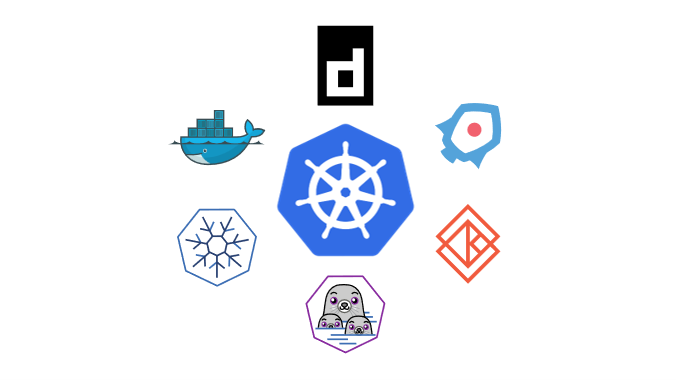A Comprehensive Guide to Container Runtime Interface (CRI)
In the world of container orchestration, the Container Runtime Interface (CRI) plays a pivotal role in ensuring seamless communication between container orchestrators like Kubernetes and various container runtimes. This blog will delve into what CRI is, its importance, and how it enhances container management.
Table of Contents
- What is Container Runtime?
- What is Container Runtime Interface (CRI)?
- Why CRI is Important?
- How CRI Works?
- Benefits of Using CRI
- Case Study: Kubernetes with CRI-O
- Conclusion
- References and Further Reading
- Tools and Resources for CRI
What is Container Runtime?
Before exploring the Container Runtime Interface, let’s first understand what a Container Runtime is and explore a few popular ones.
A Container Runtime is a software component responsible for running and managing containers on a host system. It provides an environment for containers to run, manages their lifecycle such as creating, starting, stopping, and deleting container. Additionally the container runtime also manages aspects like container networking, storage, & security and provides interfaces for interacting with them. Some popular examples of Container Runtimes include:
1. containerd: An industry-standard container runtime sponsored by the Cloud Native Computing Foundation (CNCF). It is a core component of Docker Engine and is also used by Kubernetes.

2. CRI-O: A lightweight, Kubernetes-native container runtime designed for running Open Container Initiative (OCI) containers. (OCI specification is a standard that defines a common format and runtime for container technologies to ensure interoperability and consistency across different container platforms.)

What is Container Runtime Interface (CRI)?
The Container Runtime Interface (CRI) is a standard API or is a plugin interface that lets the kubelet (an agent that runs on every node in a Kubernetes cluster) use more than one type of container runtime i.e, docker, CRI-O, containerd, rkt etc.

CRI was first introduced in Kubernetes 1.5 as alpha, it enables Kubernetes to use any compliant container runtime without needing to change its core code. The most widely known container runtime is Docker, but it is not alone in this space.
Why CRI is Important?
Initially, Kubernetes was designed to work exclusively with Docker as its container runtime. This tight coupling between Kubernetes and Docker posed certain limitations and inflexibility. For instance, if Docker had any issues or limitations, Kubernetes would inherit those problems, reducing its reliability and adaptability. Moreover, relying on a single runtime made it harder to adopt new and potentially better container technologies as they emerged. To address this issue, the Container Runtime Interface (CRI) was introduced for Kubernetes. CRI acts as an abstraction layer that decouples Kubernetes from any specific container runtime.
With CRI in place, Kubernetes can now interact with any container runtime that implements the CRI specification. This abstraction enhances Kubernetes’ modularity, allowing it to work with different runtime environments beyond just Docker. As a result, Kubernetes gains more flexibility and can leverage the capabilities of various container runtimes, expanding its potential use cases and deployment scenarios.
In simple terms, CRI enables Kubernetes to be runtime-agnostic, freeing it from the earlier dependency on Docker alone. This change promotes greater flexibility, interoperability, and extensibility within the Kubernetes ecosystem.
How CRI Works?
CRI defines a set of gRPC APIs that container runtimes must implement. These APIs include functionalities such as:
- Image Service: Manages the lifecycle of container images.
- Runtime Service: Manages the lifecycle of containers, including creation, deletion, and execution.
When a user deploys a containerized application, Kubernetes interacts with the CRI to manage the underlying containers. The CRI translates these requests into operations on the container runtime, ensuring smooth orchestration and management.
Benefits of Using CRI
- Flexibility: Allows Kubernetes to work with various container runtimes.
- Modularity: Decouples Kubernetes from specific runtimes, enhancing modularity.
- Efficiency: Provides lightweight and specialized runtimes tailored for Kubernetes.
Case Study: Kubernetes with CRI-O
Scenario
A large-scale enterprise seeks to optimize its container orchestration setup by switching from Docker to a more lightweight and Kubernetes-specific runtime.
Implementation
The enterprise transitions to CRI-O, leveraging its lightweight nature and OCI compatibility. The process involves:
- Configuration: Updating Kubernetes configurations to use CRI-O as the runtime.
- Migration: Migrating container images and workloads to CRI-O.
- Optimization: Fine-tuning CRI-O settings for improved performance.
Results
- Reduced Overhead: Achieved significant performance improvements and reduced resource overhead.
- Enhanced Security: Leveraged CRI-O’s security features for better isolation and control.
Conclusion
The Container Runtime Interface (CRI) is a crucial innovation in container orchestration, providing flexibility, efficiency, and modularity. By enabling Kubernetes to interact with multiple container runtimes, CRI enhances the overall container management ecosystem. Whether using CRI-O, containerd, or another compliant runtime, the benefits are clear—streamlined operations and optimized performance.
References and Further Reading
- Kubernetes Documentation: kubernetes.io/docs
- CRI-O Documentation: CRI-O
- containerd Documentation: containerd
Tools and Resources for CRI
- CRI-O: GitHub Repository
- containerd: GitHub Repository
By- Dheeraj Sain